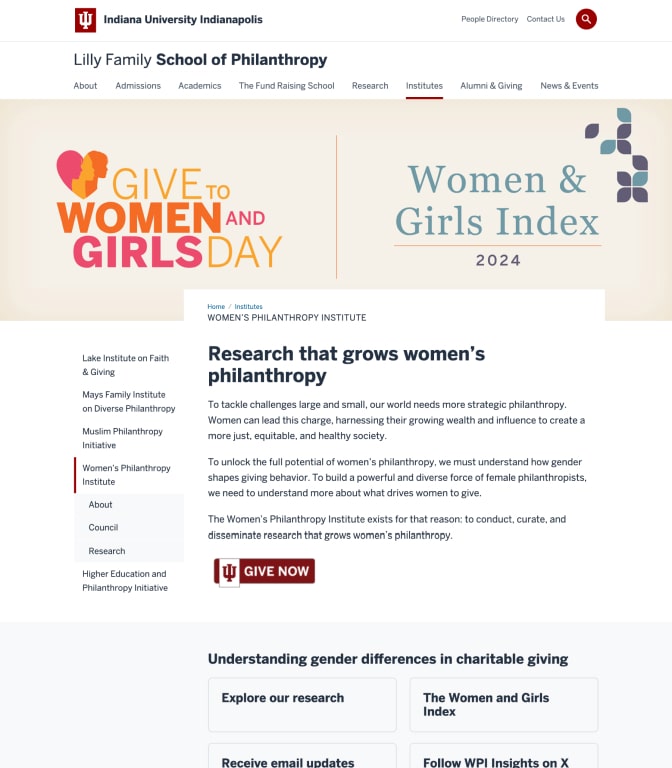When you have done all of the hard work of setting up your website, finding the best domain, discovering the keywords that will fit your content perfectly and double checking for errors, it’s time to publish the articles. But it looks like you forgot to check your articles for readability scores. How does readability affect SEO rankings of my website?
We have already talked about the basic SEO techniques that you can use in order to boost your search engine rankings, but what about readability scores of your articles? Do you really need articles that have a good readability score to rank as high as possible?
The short and simple answer to this question is – yes, you do. But how can readability affect my website’s rating? Can search engines actually distinguish articles that are easy and natural to read from bad ones? While this is true, the search engines don’t have a feature to rank your articles based on their readability, at least not the one that we know about. But, how does readability affect SEO scores of my article, if search engines don’t have such a feature?
Your articles don’t rank only for the features that search engines have. This is why content readability has a huge impact on indirect ranking factors of your article.
Direct ranking factors
The common things that search engines can rank your article for are:
- Keyword density
- Keyword decorations
- Meta tags
- Image alt tags
- Grammar of your article
- Page title
- URL
This is just an example of a few on-page SEO elements that content marketers are always trying to optimize. There are a lot more of them, but readability of your content is not on this list because all of these are direct ranking factors.
The thing that is most commonly overlooked because of the lack of the ranking system for it is content readability. It would be a huge mistake to assume that content readability doesn’t affect your website’s ranking, so we will try to go into every single detail on how does readability affect SEO ranking and how can you optimize your articles to be perfectly tailored for your users.
We have made this detailed guide in order to help all of the people that are experiencing ranking problems due to the bad content readability. We will try to answer all of the questions you might have about this topic and to cover every aspect of it.
How does readability affect SEO – Understanding content readability
In order to get the complete answer to the question: How does readability affect SEO scores of my articles?, we need to know what content readability really is. To explain it in the simplest way, content readability of any of your articles represents how easy can your visitors understand your written content.
The important thing that you should always keep in mind when writing any of your content is that you are making it primarily for your visitors. As important as it is to rank good for particular keywords on search engines, if your articles can’t be understood with ease by your audience, they won’t have the informational value your visitors deserve.
The term of content readability is fairly easy to explain, but in order to understand how you can measure it and optimize it for your personal use, you will need to learn a bit more. Learning more about content readability will give you a complete answer to the question how does readability affect SEO rankings of your whole website.
Science behind readability scores
There are various scientific methods that we use to determine the readability scores of our content. We will list the most important ones that you should pay extra attention to:
- Having good visibility
- Speed of perception
- Being recognizable at a distance
- Reflex blink technique
- Reading speed
- Eye movements
- Having good perception in peripheral vision
- Fatigue while reading
These are all the factors that are taken into account when measuring the readability of your content. All of these scientific methods can be explained in a few simple words -if your article can be read and understood easily by your audience, it has great readability score. But, sometimes it is hard to determine if your audience can perceive your written text in the same way you do. You article might look clear and natural to you, but we need definite scientific measurements to be certain that it can be actually read with ease.
How does readability affect SEO – Readability scores of my articles
Content readability is usually measured by roughly estimating the grade of the students that are capable of understanding this particular content. A recent study that was conducted on more than 10.000 people gave us a better insight on the reading abilities of your potential visitors.
This study has shown that the average person has the ability to read a text that is on the level of a grade 9 student. This study has also shown that the vast majority of people prefer to read texts that are at least 2 grades lower. This interesting information tells us that people don’t want to put a lot of effort into reading complex articles, they want to be able to understand your article with ease while reading it leisurely.
While it is true that Google doesn’t rank your content according to your readability scores, that doesn’t mean the algorithms to measure it don’t exist. Scientists have discovered plenty of methods to measure the content readability of your articles. These methods are widely used by search engines in order to measure it. Finding out the exact readability scores of your articles will help you to better understand how does readability affect SEO rankings.
Flesch-Kincaid readability test
The algorithm that is the most popular, when it comes to content readability , is Flesch-Kincaid readability test.
This is just an example of the most popular algorithm, there are plenty more that are being used by search engines all of the time. The search engine crawlers use a wide variety of algorithms to determine the precise score of article’s readability. Some of the most popular algorithms are Coleman-Liau algorithm, Gunning-Fog algorithm and SMOG indexing.
As we can see from this picture, this is a pretty detailed formula. How can we translate this complicated formula into a simple explanation for our article’s readability score? This algorithm counts the number of syllables in all of the words in your text and compares it to the number of words in all of the sentences in your article. The information that we can gather from this is that you should use short words and short sentences. This will yield the best results and give your articles an amazing readability score.
How does readability affect SEO – Measuring the readability of your articles
There are also plenty of tools that can help you in measuring your content readability scores. You can find some great tools with a simple Google search, but we have hand picked some of our favorites:
- Free online readability test tool
- Readable.io
- TheWriter readability checker
These tools will provide you with a great insight into your readability score. This a crucial step that you need to take in order to make your article’s readability score as high as possible. Knowing your readability scores is an important piece of information, but that’s not the whole story. If you want to make amazing articles, you need to know how does readability affect SEO in every aspect.
If you don’t know what to do after you get your content readability scores, you won’t accomplish much. That is why we are going to guide you step-by-step through this process of getting to know how does readability affect SEO scores of your website and what are the necessary actions that you need to take in order to optimize those scores to their full potential.
How does readability affect SEO – The hidden value of readability
We have already said that search engines don’t take your readability scores into their ranking algorithms. The biggest mistake that you can make here is completely ignoring the readability of your articles.
The real hidden value of readability is its potential to affect your search engine ranking score, without you even noticing it. Many of the search engine’s algorithms are based on the behavior of your visitors while they are browsing your business’s website. In order to improve the behavior score of your audience, you will need to improve the quality and readability of your articles.
How does readability affect SEO scores that are calculated according to the behavior of your visitors? What are the perks of the articles with a good readability scores? If you manage to create an amazing content with good a readability score, you will see an improvement in these specific areas of your SEO scores:
- Time on page
- Exit rate
- Bounce rate
- Social sharing rate
- Conversion rate
- Total number of sessions
All of these information you can easily track with Google Analytics. This will give you a better insight on how your business is improving on a daily basis.
By indirectly improving all of these SEO factors, you will see a significant and steady rise of your SEO scores on the search engine result pages. It might look counter-intuitive to work on the things that don’t directly affect your SEO rankings, but this is the correct way to do it.
Articles that are written badly
Have you ever started reading an article that has an amazing title, but the first few sentences were just too hard to read? The flow of the text was not natural, you had to read it a couple of times to fully understand it and it was just too much for you. This happens because none of the visitors are there to read a complicated article that can’t be read with ease.
It’s true that your audience is looking for top-quality information about a specific topic, but that doesn’t mean you have to make difficult articles that nobody likes to read. Your visitors are looking for answers on a particular question, and they want that question answered in the simplest and fastest way possible. It is your job to provide your potential visitors with these information which they will understand in a matter of seconds.
The articles that are written in a proper way will make your audience crave for more knowledge. Furthermore, your readers will stay on your web page longer, since they won’t have a problem reading and understanding any of your content.
Focusing on giving the perfect answers to your readers will do wonders for your SEO rankings. Your content should provide all of the necessary information that your visitors are looking for – there is no point in providing that content if they can’t fully understand it.
Now that we have identified the problem of the article readability, we need to find out the best way to solve it. Solving this problem will have a major impact on your SEO ranking scores, which is our main goal – showing everyone on the Internet how great you business really is. Let’s get to work right away!
How does readability affect SEO – Improving your content readability scores
It might be difficult and confusing when you have no idea how to improve the readability scores of your articles. There are so much things that you can change in your articles, where should you even start? Should you just start a new article from scratch? Don’t worry, this isn’t a problem without a solution. There is no need to remove all of your previous content, but you will have to adjust it in order to get amazing readability scores.
We have made this detailed guide that will transform your articles into content which will leave your users begging for more. If you make sure to follow all of these steps, we are certain you will see improvements in your SEO scores in no time. But, more importantly, you will see improvements in your visitor’s satisfaction and engagement – they will finally be able to acknowledge how great your business truly is.
How does readability affect SEO by using short and simple words
The easiest way to improve your Flesch-Kincaid readability scores is to use shorter and simpler words. You shouldn’t focus on using long and complex words, they will just make your article harder to read. The visitors that are reading your content aren’t looking for English lessons and complex words that they don’t understand – keep it short and simple.
This doesn’t mean that you should avoid certain words and only use the simple ones. If you need a particular word to explain what you are trying to say, go for it. The goal here is to limit the usage of those words as much as you can. In most cases, you can use a different word that has the same meaning, but gives a better reading experience to your users.
You shouldn’t be focusing on showing off your vocabulary in your articles, your only goal is to create exceptional content that can be easily understood by everyone. If you are able to explain a certain topic to your readers using simple words, that proves you are competent enough to write about it. The ability to explain a particular topic as simple as possible is a great indicator of how well you understand that same topic yourself.
How does readability affect SEO by using shorter sentences
One of the biggest areas that you can work on, in order to improve your score, is sentence length. How does readability affect SEO when it comes to sentence length? It’s fairly simple, sentence length can affect your SEO scores in both ways, directly and indirectly. While you can see the direct way pretty easily, it affects your ranking indirectly as a part of Flesch-Kincaid test scores.
The obvious solution to this problem is writing shorter and simpler sentences. But you can also break your sentences with the usage of a transition word. See what we did there?
This is just a simple example on how it can be done. There are various ways to split your sentences so they become more natural and easier to read. The only thing that is stopping you is your imagination.
While it’s true that you shouldn’t use sentences that solely fill up a whole paragraph, be careful when splitting them. You don’t want the final version of your article to be a bunch of chopped sentences without structure and meaning. Keep in mind that moderation is the key to success.
Writing conversationally
This should be a general guideline for your future articles. When writing an article, you should always keep in mind that you are talking to your visitors. That’s why your articles should have a conversational form, like you’re talking to your readers in real life.
Getting used to this style of writing can take some time, so don’t get easily discouraged. As you adapt to this specific writing style you will notice obvious changes in your articles. You will start using simpler words and your sentence will become shorter. Your articles will become easier to understand and they will have a more natural flow.
Using passive voice
You are probably using passive voice in your articles and that’s completely fine. The problem with passive voice emerges if you start using it way too often. You should use passive voice when you are intentionally trying to make a point – you shouldn’t use it in every sentence of your article.
It can be a really tiresome process trying to find all of the passive voice usage in your content. That’s why you should use some of the readability tools we mentioned previously. They will help you located the usage of a passive voice and give you tips on how to change it.
This doesn’t mean that you should avoid passive voice at all cost – just make sure you use it when it’s really necessary. You should always keep in mind that using active voice makes your sentences sound clearer and more natural to your readers.
How does readability affect SEO – Typography
Now that we have covered all of the syntax problems you might experience, there is one more big aspect of your articles you shouldn’t overlook – it’s the visual aspect. There are a lot of factors that can impact the reading speed of your visitors, and one of them is typography.
Our goal is to make content that is visually appealing to our visitors. While this content should be read with ease, bad typography makes even the greatest articles hard to read. What are the characteristics of an article that uses a good typography?
Font
Before you start writing your content, you’ll need to choose the perfect font for your article. This font needs to satisfy one basic rule – it should be clear and easy to read. Novelty fonts are a great choice, but only for your headers and subheaders. This will make them stand out from the rest of your text and your readers shouldn’t have trouble reading them, since they are short and simple.
The best font for the body of your text should almost always be some variation of standard sans-serif fonts. There are a variety of fonts that you can choose from, so don’t hesitate to experiment with different fonts. You might find some fonts that will make your article look visually amazing.
Helvetica, News Gothic, Arial, Gill Sans and Futura are just some examples of the most popular fonts, when it comes to article writing. These are all amazing fonts, so you will have to figure out which one of these works the best for you. Fonts that are more suitable for printed mediums are serif fonts.
Font size
In order to find the perfect font size for your article, you need to consider two things.
If your font size is too big, it will take up too much space on your web page. Your user’s eyes will need to move back and forth a lot, in order to read the whole article.
If your font size is too small, it will put too much strain on your reader’s eyes. Don’t forget that reading an article on a computer screen is a bit more tiring than reading it from the newspapers.
An ideal size for the body text of your article should be somewhere around 16 pixels, depending on the font that you have chosen. This is the default size that the fonts are displayed on most of the browsers, and there is a reason behind it. This size represents the ideal size for the best reading experience for your visitors.
Headers and subheaders are supposed to have a different font size than the rest of your text. You want to distinguish them from the body text of your article, so make sure you make their font slightly bigger. You can also experiment with different fonts for headers and subheaders to make the hierarchy of your article clear and obvious.
Line Height
When you choose the perfect font that fits your article just right, there are two more factors that you should keep in mind. Line height and line length of your text play a major role in the readability of your entire article.
Line height represents how much white space is there between lines of text. You want to make sure that there is enough white space between each of your text lines. Make sure that your lines aren’t cluttered together – this can leave a really bad impression on your users.
If your users can’t clearly distinguish all of the lines in your text, they won’t bother to read them. Your goal is to make the article easy to read, so don’t forget to adjust your line height. Our advice is to use at least 150% of your particular font size for your line height configuration. You can test this option and go for a higher value, if you think it makes your article look more natural and easier to read.
Line length
Another similar option to the line height is line length. Choosing the right line length can have a great impact on the overall look of your article. If you choose the line length that is too narrow, or too wide, your article won’t have a good natural readability.
The best practice that you should start using, when testing the perfect article, is to experiment with it. You can change this option and see the results instantly – just choose the one that makes your article look more natural.
Our pick for the optimal line length is anywhere between 9 to 13 words per line or anywhere between 40 to 75 characters per line. These aren’t precise guidelines, since your font can have a big impact on your characters size. The best thing to do is to test a few different line lengths and see which one fits your article perfectly.
Formatting your article properly and having a proper hierarchy
This is extremely important when it comes to the visual effect of your article. You don’t want your article to look like a cluster of tightly grouped words that can’t be seen properly – don’t be afraid to start a new paragraph whenever you feel the need to.
It’s always better having more paragraphs than not properly formatting your article. Your readers are more likely to choose the paragraphs they want to read – they might not be interested in reading the whole article. If your article is not properly formatted, they won’t be able to find the paragraph they are looking for, and they will simply search for a different article.
Segmenting your content with headers and subheaders should also be done in a proper way. Choosing the right part of the topic for the header is a process that needs a little research. You should choose the part that can be later divided into a few more parts, which will become subheaders in the future.
Presenting your audience with the most crucial information can be done in many ways – you can use bullet points, tables, ordered lists or text decorations to highlight the important words about the specific topic.
This won’t only make these phrases stick out from the rest of the text, this will have a good effect on your readers. They will be more likely to remember the words from your article that are highlighted or decorated. You should definitely try this technique, it will put the proper focus on your article and it will make your articles look more alive.
Decorating your article with images
How does readability affect SEO ranking of my website when it comes to the number of images in my articles?
Having meaningful images that fit your article perfectly might make all the difference if your article gets shared or not. Images are a crucial segment of your content and you shouldn’t overlook their influence.
In order to keep your readers interested in your article, you will need to break the monotony of your black-and-white body texts. This doesn’t mean that you should start adding any random images of cute animals that you find online.
The images in your article should be used to describe your topic in the best possible way. A recent study has shown that the golden ration of image to text in your article should be 1 image for every 100 words. This might be a little hard to accomplish, so don’t take this information to literally. Having an image for every heading or subheading that needs more explanation should work just fine.
As we have mentioned before, you should only include images that are tightly connected to your topic. This images will add value to your content, and more importantly, they will add value to your visitors.
How does readability affect SEO – Our final thoughts
We still can’t say with 100% certainty that content readability isn’t a factor when it comes to Google’s direct ranking, but the chances for that are very high. What we can be certain of is that content readability has a great indirect impact on the Google’s ranking of your website.
It’s not a small job to optimize your business’s website to the fullest, when it comes to content readability. With this being said, this is a job that is worth doing. If you manage to do it in the right way, it will have a crucial impact on your SEO rankings. Improving your content readability won’t only improve the experience of your visitor’s reading, it will be beneficial to your overall SEO rankings as well.
We have made this detailed guide in order to answer much more than just a question How does readability affect SEO? We hope that you were able to find all of the necessary information in this guide that will help you improve your readability scores of your articles.
If you have followed every step of this guide correctly, we are certain that your final result will be an article that is easy to read and easy to understand by any of your readers.
Don’t forget that your main goal is creating top-quality content, but not for yourself. You should always think about the readers before you publish any of your articles, think about their needs and about the answers they are looking for.
We hope that you will be able to implement all of these techniques into your next big article. Make sure to fully understand each of these methods on improving your readability scores, so you can boost your business on search engine result pages as much as possible.
Our help is always available
If you happen to struggle with implementing some of these features on your website, our team of professional would be happy to help you out on every step of the way. These are the people that have already helped thousands of satisfied customers to achieve their goals and dreams. There is nothing better than helping our customers achieve their desired success and watching their business grow every step of the way.
When you are ready to give your business a much needed boost and bring its performance to a whole new level – don’t hesitate to contact us. We are looking forward to hearing from you, so don’t be afraid to take a step in the right direction, and that direction is towards being the best company that you can be!




















